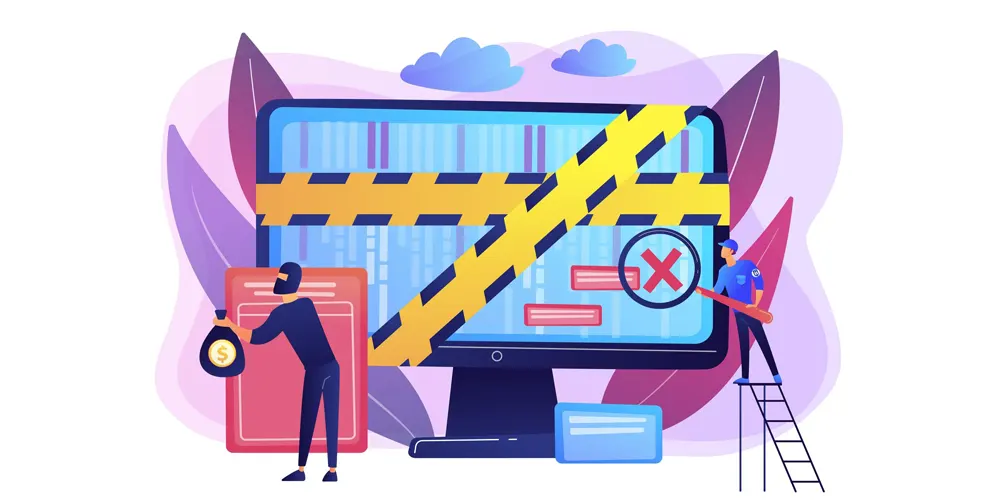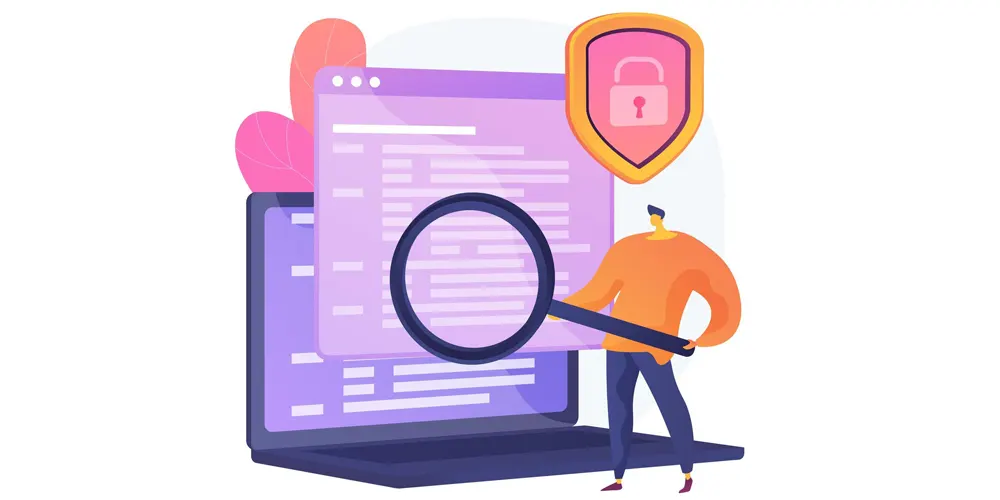How to Identify Robocall Scam Traffic - A Comprehensive Guide for Telecom and VoIP Operators
Are you drowning in robocall scams?
Imagine: Millions of fraudulent calls flooding your network, eroding customer trust and threatening your reputation. This is the reality of the robocall scam epidemic, a growing problem plaguing telecom and VoIP carriers worldwide.
But there's hope! This comprehensive guide will equip you with the knowledge and tools to identify and mitigate robocall scam traffic in your network.
Why is this crucial? Robocalls not only harm your customers financially and emotionally but also expose your network to vulnerabilities and potential regulatory scrutiny.
Through clear explanations and practical strategies, this guide will empower you to:
- Recognize red flags of suspicious call patterns and content.
- Leverage advanced analytics to detect and block malicious activity.
- Implement effective mitigation strategies to protect your network and customers.
Ready to take a stand against robocall scams? Join us on this journey to a safer, more secure calling environment for everyone.
Understanding Robocall Scam Traffic

Robocall scams are automated calls with pre-recorded messages, often disguised as legitimate entities like banks, tech support, or government agencies. These calls aim to deceive and exploit victims. They typically target personal information, financial details, and resort to emotional manipulation for financial gain.
Characteristics of Robocall Scam Traffic

- Spoofed Caller ID: Scammers manipulate Caller ID to appear as trusted entities, increasing call answer rates.
- Pre-recorded Messages: Generic scripts designed to sound urgent or authoritative, creating a sense of panic or pressure.
- Phishing Attempts: Scammers try to extract personal information like passwords or credit card numbers through deceptive tactics.
- Aggressive Tactics: Threats, intimidation, and false urgency are common to pressure victims into making rash decisions.
Impact on Telecom and VoIP Operators

Robocall scams are not just a nuisance for your customers; they pose a significant threat to your operations and reputation. Here's how.
Financial Penalties
- FCC Fines: The Federal Communications Commission (FCC) can impose substantial fines on carriers failing to comply with anti-robocall regulations. In 2023, XCast Labs faced a $10 million fine for facilitating millions of illegal robocalls.
- FTC Fines: The Federal Trade Commission (FTC) can also levy hefty fines for deceptive practices. Globex Telecom was fined $2.1 million in 2020 for facilitating robocalls targeting consumers nationwide.
Reputational Damage
- Customer Churn: Frustrated customers facing constant scam calls may switch to carriers perceived as offering better protection.
- Public Scrutiny: Negative media coverage and public complaints can damage your brand image and erode customer trust.
- Operational Costs: Investigating complaints, managing customer support, and implementing mitigation measures incur significant costs.
Network Security Risks
- Vulnerability Exploitation: Scammers may exploit network vulnerabilities opened by robocall attempts, posing a cybersecurity threat.
- Resource Drain: Spam calls consume network resources, potentially impacting legitimate traffic and overall call quality.
Key Indicators for Identifying Robocall Scam Traffic

Similar to how computer viruses have their own unique signatures, robocall scam traffic has its own signatures too. There are specific indicators that you can look out for to identify if the traffic passing through your VoIP network is robocall scam traffic or not.
1. Call Volume Analysis

Imagine millions of automated calls flooding your network undetected. Call volume analysis can be your first line of defense, shining a light on suspicious activity. Here's how:
1. Sudden Spike in Outbound Calls: Legitimate businesses typically exhibit predictable call patterns. A sudden, unexplained surge in outbound calls, especially outside regular business hours, screams "robocall scam." Analyzing call volume by time and origin can expose these anomalies.
2. High Call Rates to Specific Number Ranges: Scammers often target specific groups or exploit known vulnerabilities in phone number ranges. Identifying unusually high call rates to specific number ranges, especially those associated with scams in the news, can flag suspicious activity.
By analyzing these factors and comparing them to historical data and industry trends, you can identify patterns indicative of robocall scams. This early detection allows for:
- Proactive blocking: Prevent suspicious calls from reaching your customers.
- Targeted investigation: Pinpoint the source and take action against malicious actors.
- Improved resource allocation: Optimize network resources for legitimate traffic.
Remember, call volume analysis is just one piece of the puzzle. Combining it with other strategies like caller ID authentication and user education creates a stronger shield against robocalls.
2. Call Duration and Frequency

One ground rule for all scams is that one needs to execute it and disappear as quickly as possible. Robocall scams are the same and aim for efficiency, not conversation.
Analyzing call duration and frequency can unveil these hidden patterns:
1. Short Call Durations: Legitimate calls often involve conversation. Unusually short durations, especially below 10 seconds, suggest automated messages and potential scams. Identifying such patterns across large datasets can flag suspicious activity.
2. Rapid Sequential Dialing: Scammers often use automated dialers to reach multiple numbers quickly. Analyzing rapid dialing patterns can expose attempts to overwhelm voicemail or target specific number ranges.
By analyzing these factors in conjunction with other data points, like call volume and time of day, you can build a robust picture:
- Short calls during peak hours followed by rapid dialing: Indicate a likely robocall campaign targeting multiple users.
- Consistent short calls from a specific source: Points to a potential bad actor within your network.
Remember, these tools alone won't stop all scams. However, by understanding these patterns and learning about these indicators, you will be able to build a strong anti-robocall scam traffic strategy.
3. Caller ID Spoofing

Spotting spoofed Caller ID, where scammers disguise their true number, is crucial in identifying robocall scams. Spoofing Caller IDs enables them to impersonate legitimate entities, making their scams highly effective.
1. Mismatched or Spoofed Information: Pay close attention to inconsistencies between the displayed Caller ID and the call's origin. Look for:
Numbers mimicking legitimate entities: Government agencies, banks, or well-known companies rarely use personal numbers or unfamiliar area codes.
A good way to ensure this does not happen is to make sure your switch is enforcing a Do Not Originate List made mandatory by the FCC.
- Unrealistic or suspicious information: Names like "Amazon Refund" or numbers with consecutive digits scream a red flag.
- Inconsistency with known business practices: Banks calling from personal numbers or government agencies offering prizes are telltale signs of spoofing.
2. Inconsistent Caller ID Data Across Calls: Scammers often use recycled numbers or switch them frequently. Monitoring for inconsistencies in Caller ID information across multiple calls from the same source can reveal suspicious patterns. For example:
- Same area code but different numbers: Suggests an attempt to target a specific region with spoofed local numbers.
- Rapidly changing Caller ID names or locations: Points to automated manipulation and potential scam activity.
4. Call Termination Rates

Call termination rates, where and how calls end, offer valuable insights into identifying robocall scams. Here's how:
1. High Rates to Non-Standard Destinations: Legitimate businesses typically call established numbers. Analyze destinations with unusually high termination rates. These can potentially be international numbers known for robocall activity and can expose suspicious patterns.
Look for:
- Numbers associated with previous scams: Flag destinations previously identified as sources of robocall campaigns.
- High-cost international destinations: Scammers often target these for inflated charges, especially on prepaid accounts.
- Unregistered or disreputable numbers: Legitimate businesses rarely utilize such destinations.
2. Unusually High Call Failures or Disconnects: Scammers often use automated dialers that place numerous calls quickly. The result is high failure rates due to busy signals or full voicemail boxes.
Look for the following signs:
- Sudden spikes in call failures: Especially from specific sources, can indicate automated dialing attempts.
- High disconnection rates after short durations: Suggests automated messages aimed at triggering call answering machines or voicemail.
- Patterns of unanswered calls followed by rapid redialing: Points to potential scam attempts targeting specific numbers.
Remember, termination analysis alone isn't foolproof. Try integrating it into your broader anti-robocall strategy. You will be able to significantly improve your network's defense and protect your customers from these malicious activities.
5. Geographic Call Patterns

While it's not okay to hold prejudices against anyone based merely on hearsay, sometimes the numbers don't lie. Scam operations are more prevalent in some countries than others.
Thus, knowing where the calls are originating from also plays a crucial role in determining if the call traffic is robocall scam traffic or not.
1. High-Risk or Non-Standard Locations: Scammers often operate from countries with lax regulations or known for robocall activity. Identify calls originating from:
- Countries with high scam reports: Like Vietnam or India, can flag potential threats.
- Locations with limited legitimate business connections: Suggest suspicious activity.
- Areas with known robocall campaigns: Allows you to proactively block calls from these regions.
2. Sudden Changes in Call Origin Geography: Legitimate businesses typically exhibit consistent geographic calling patterns. Analyze sudden shifts in origination, especially:
- Spikes in calls from high-risk regions: This can indicate a targeted robocall campaign.
- Uncharacteristic international calls: Especially outside regular business hours, warrant investigation.
- Geographic shifts followed by other suspicious patterns: Like short durations or mismatched Caller IDs, strengthen the case for scams.
6. Caller Reputation Analysis

Digging into the "who's who" of callers can be crucial in identifying robocall scams. Checking a caller’s reputation can help you in the following way:
1. Robocall Mitigation Databases: Utilize databases like STIR/SHAKEN registries, RMD or industry blacklists that assign reputation scores based on past call activity and known scam attempts. Look out for:
- Low reputation scores: Flag callers with a history of robocall activity or complaints.
- Sudden drops in reputation scores: Can indicate a change in behavior and potential scam involvement.
- Cross-referencing with other red flags: Like mismatched Caller ID or high call volume, strengthens the case for suspicious activity.
2. Historical Call Behavior and Complaint Data: Analyze your own network data to identify past call behavior associated with scams. Look for the following:
- Frequent complaints from customers: Regarding specific numbers or call patterns.
- Previous blocking of calls from similar sources: Indicates a known history of problematic activity.
- Patterns of short calls followed by disconnects: Suggest automated scams targeting specific groups.
These key indicators can help determine whether the traffic flowing through your network is robocall scam traffic or not.
Final Words
Understanding what to look for does half the job for you when it comes to curbing robocall scam traffic flowing through your network. The downsides of not doing so make it well worth it to dedicate resources towards it.
All you need is a switch with powerful Analytics capabilities. Combine that with the key indicators of robocall scam traffic that we covered today, and you will have secured your VoIP networks from robocall scam traffic.
If your Switch doesn’t offer powerful Analytics, you should definitely check out our Switch! 😉
























































































































